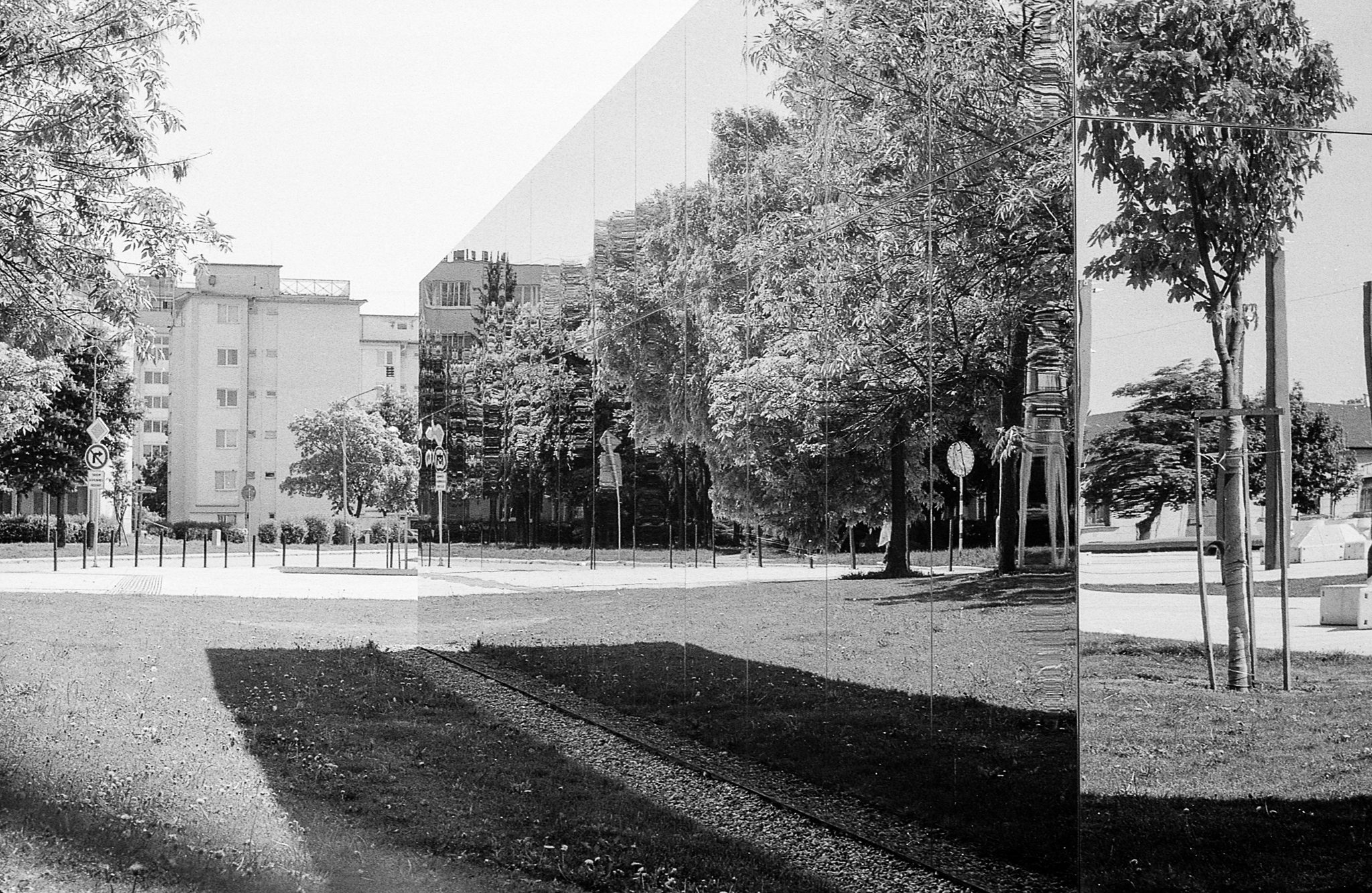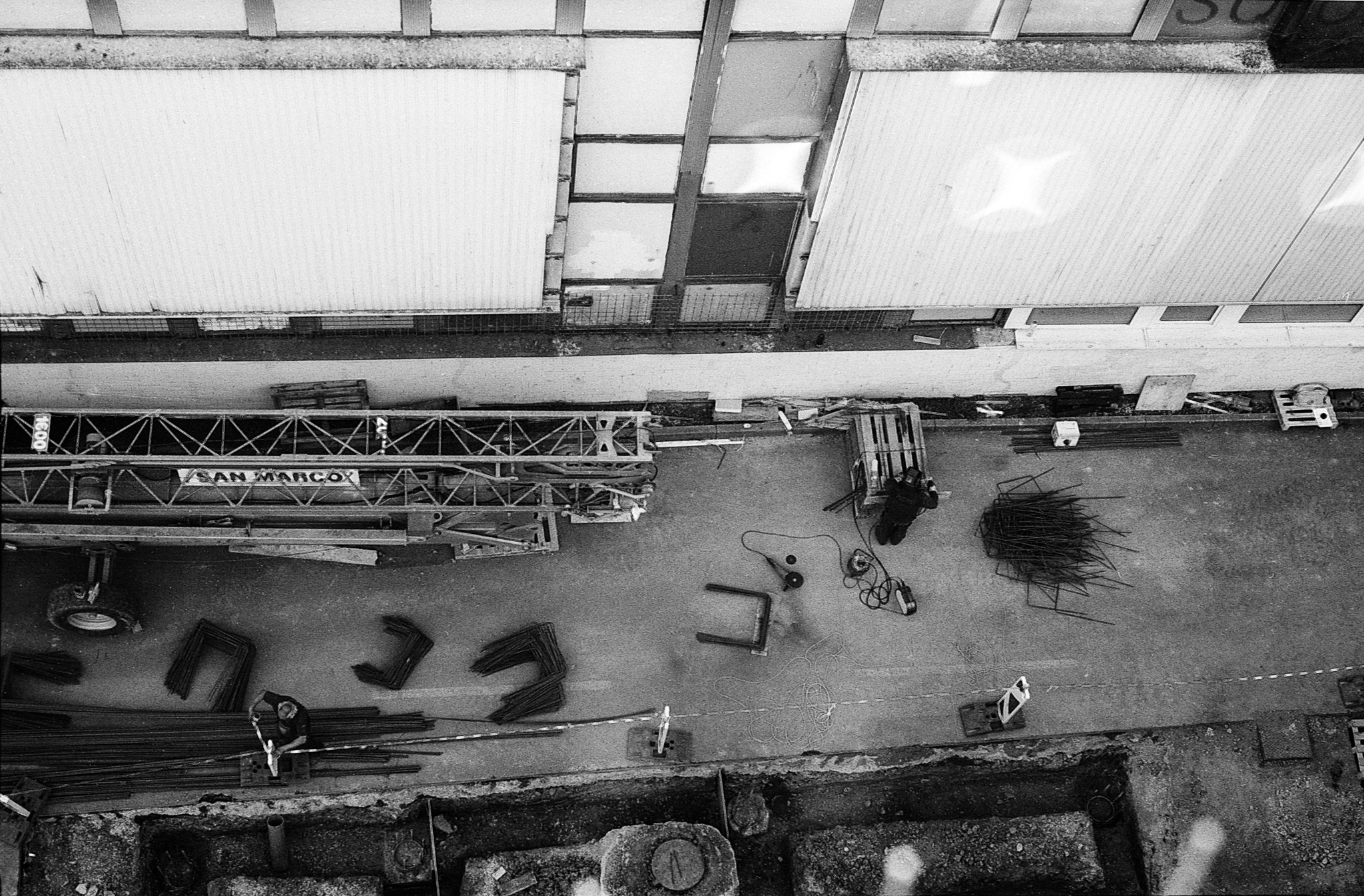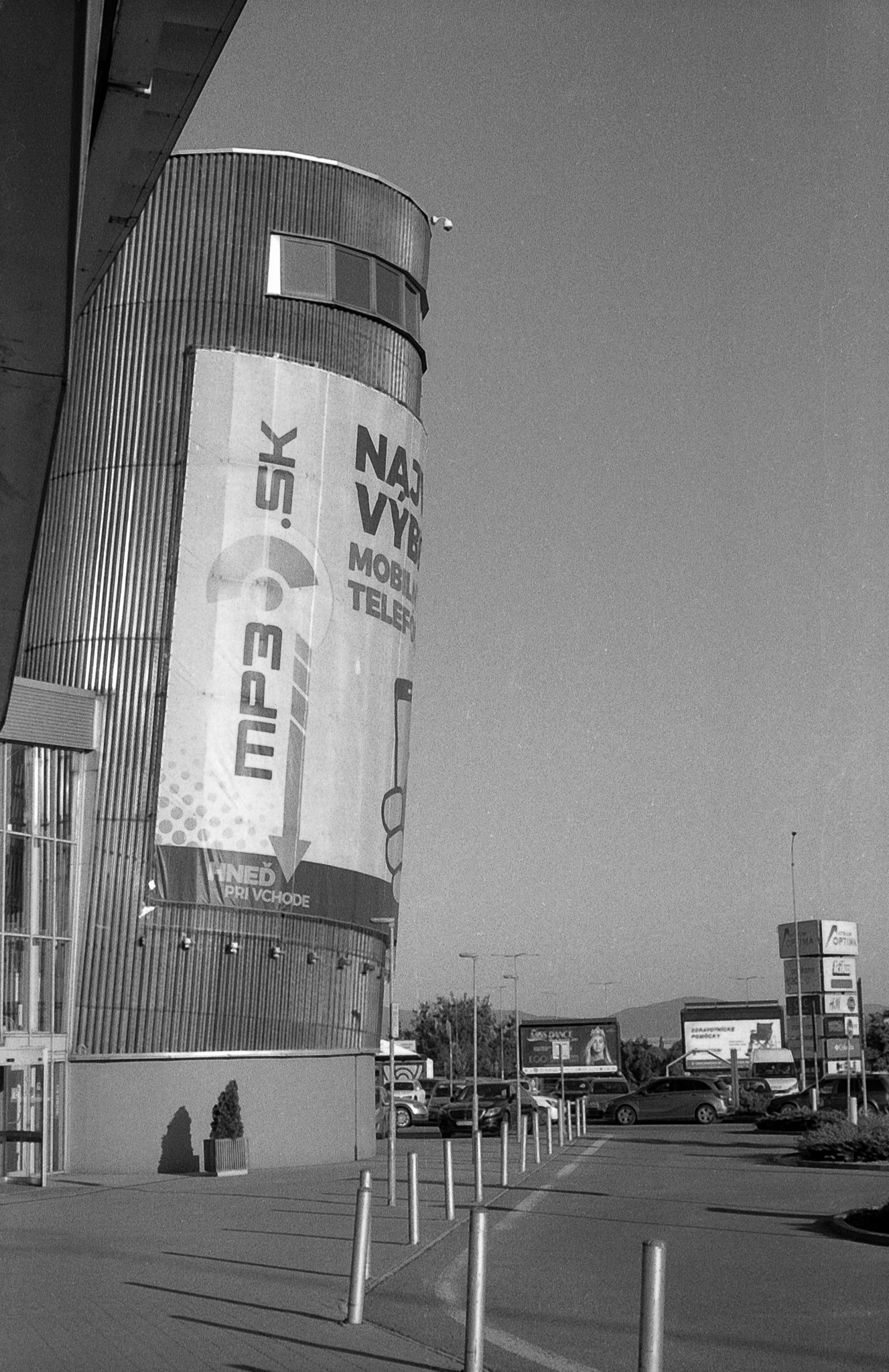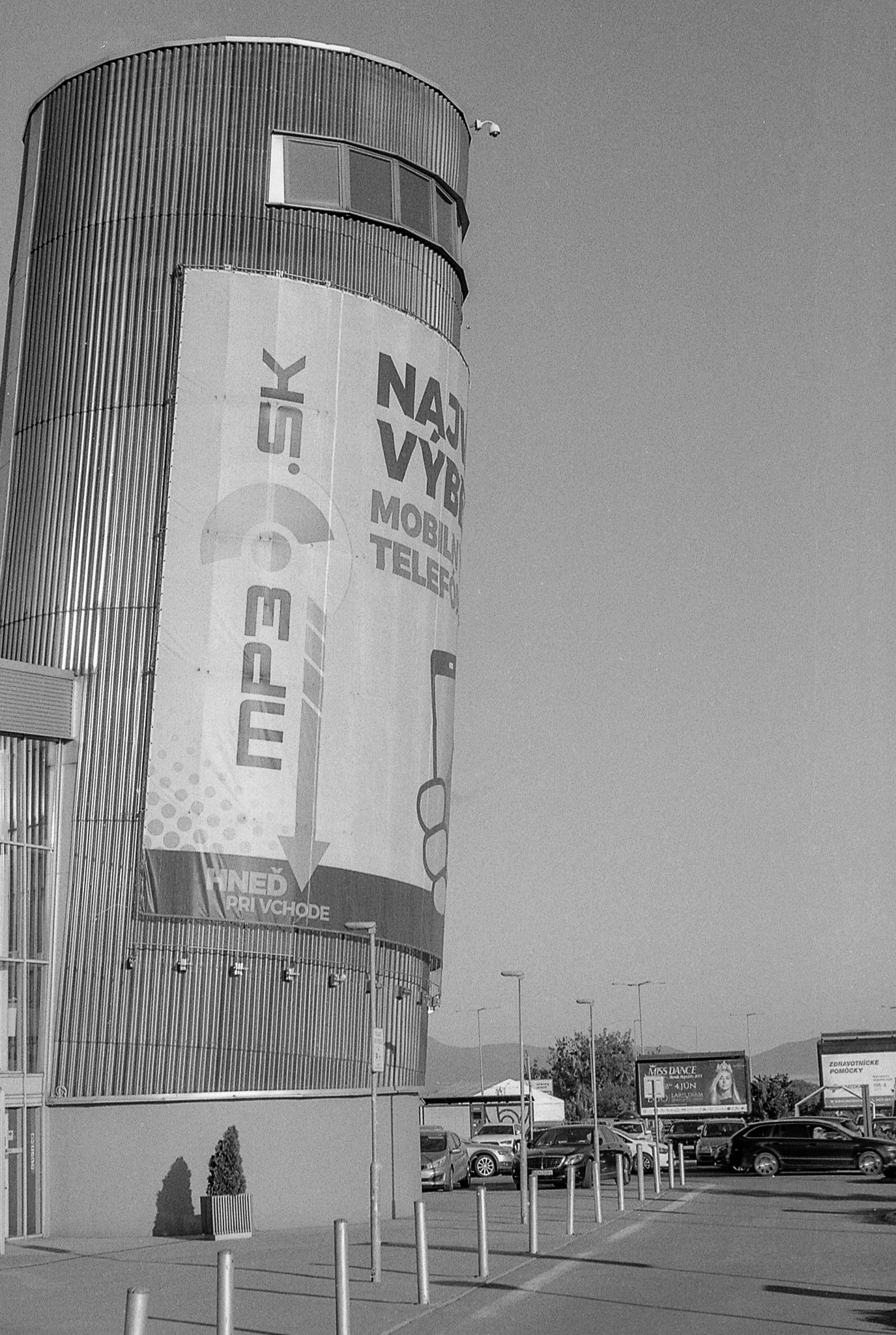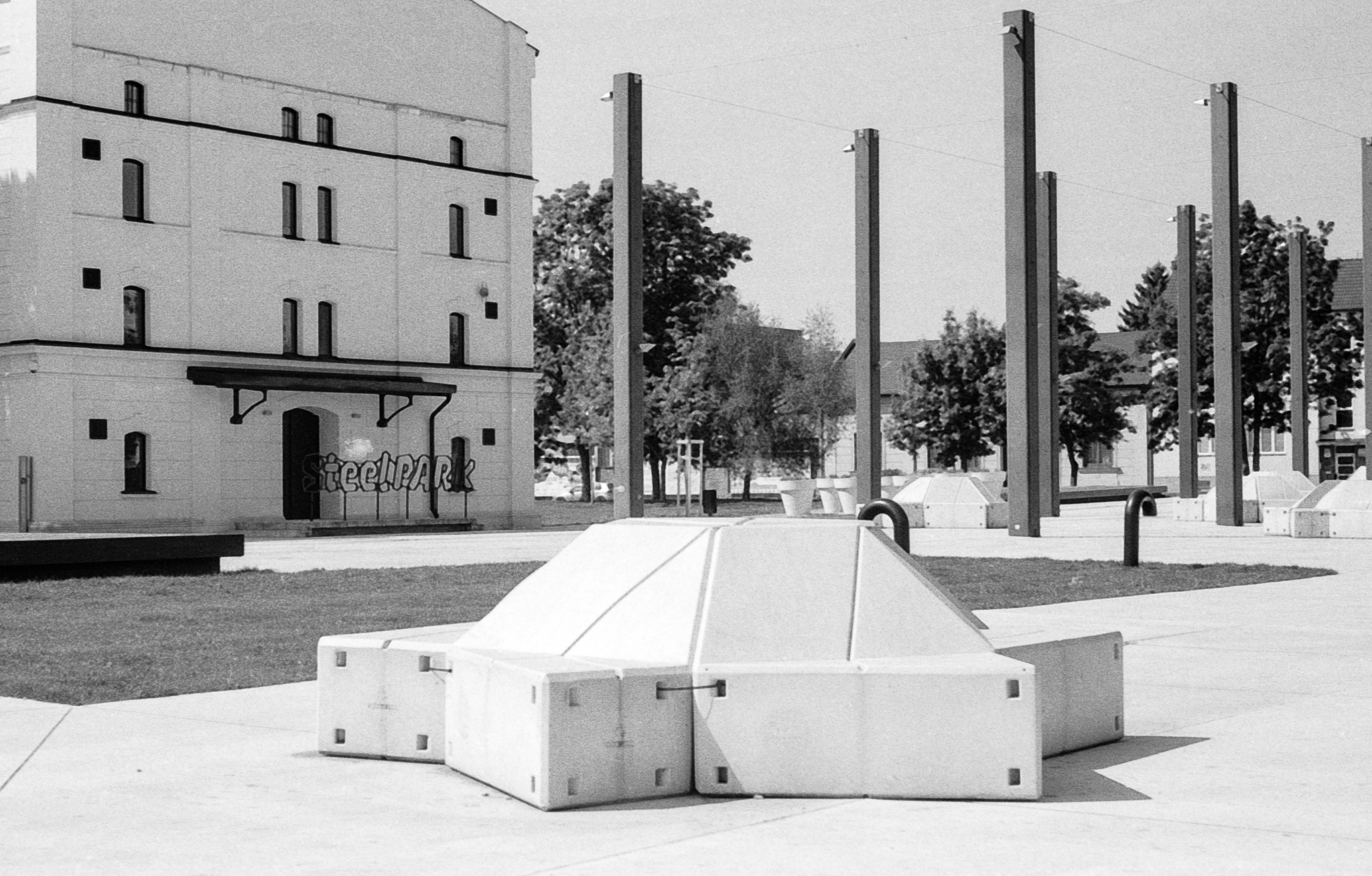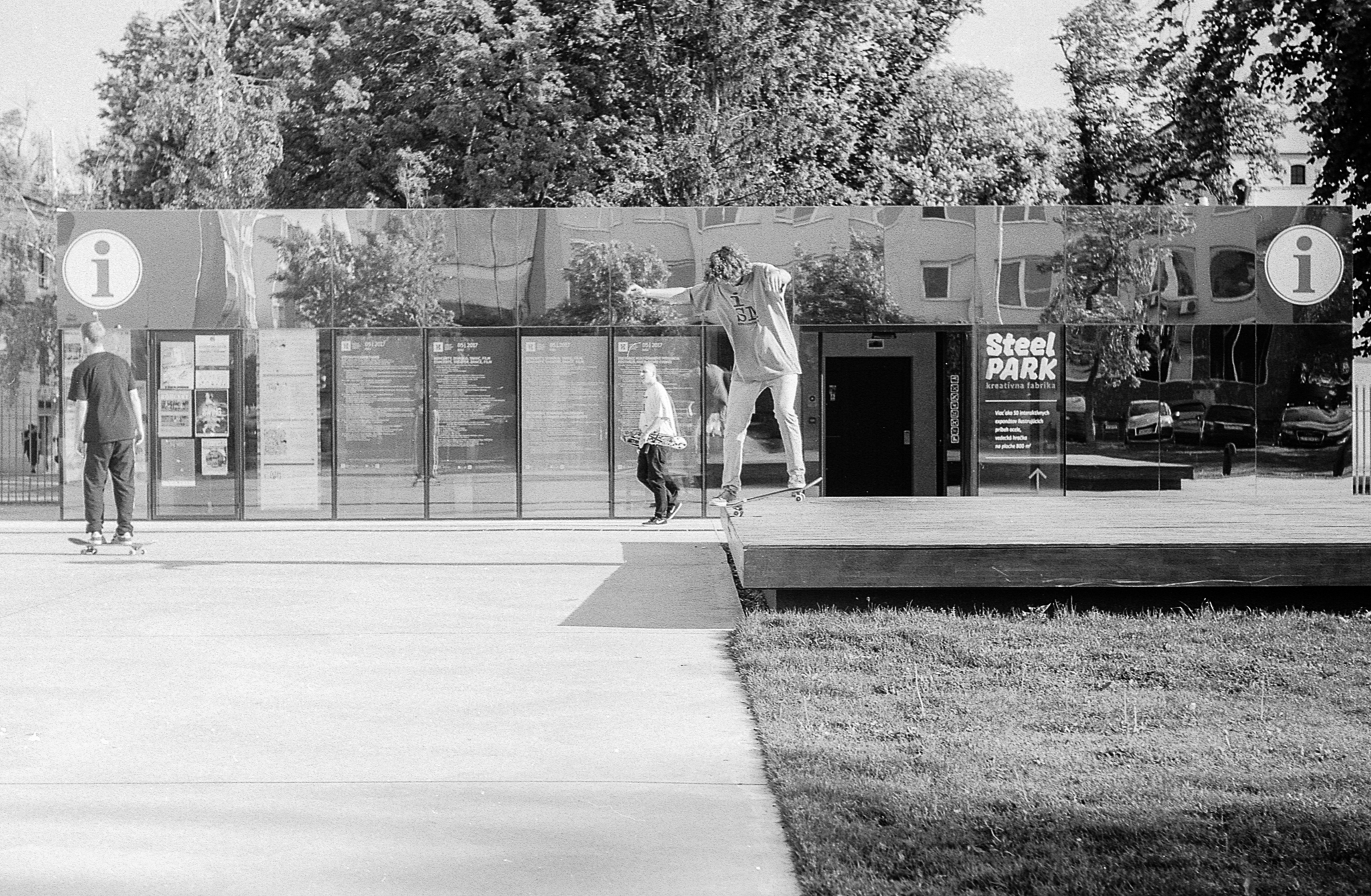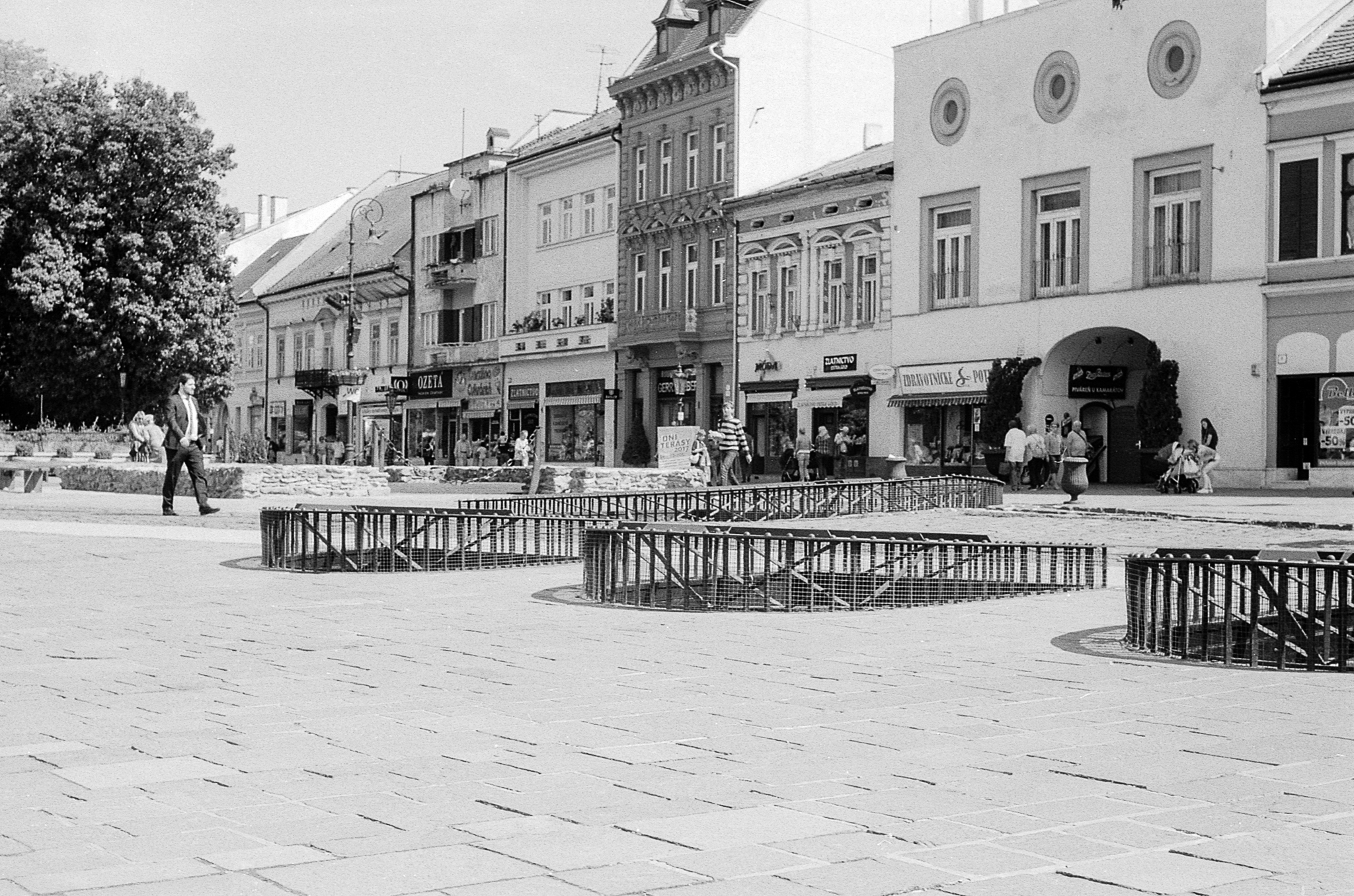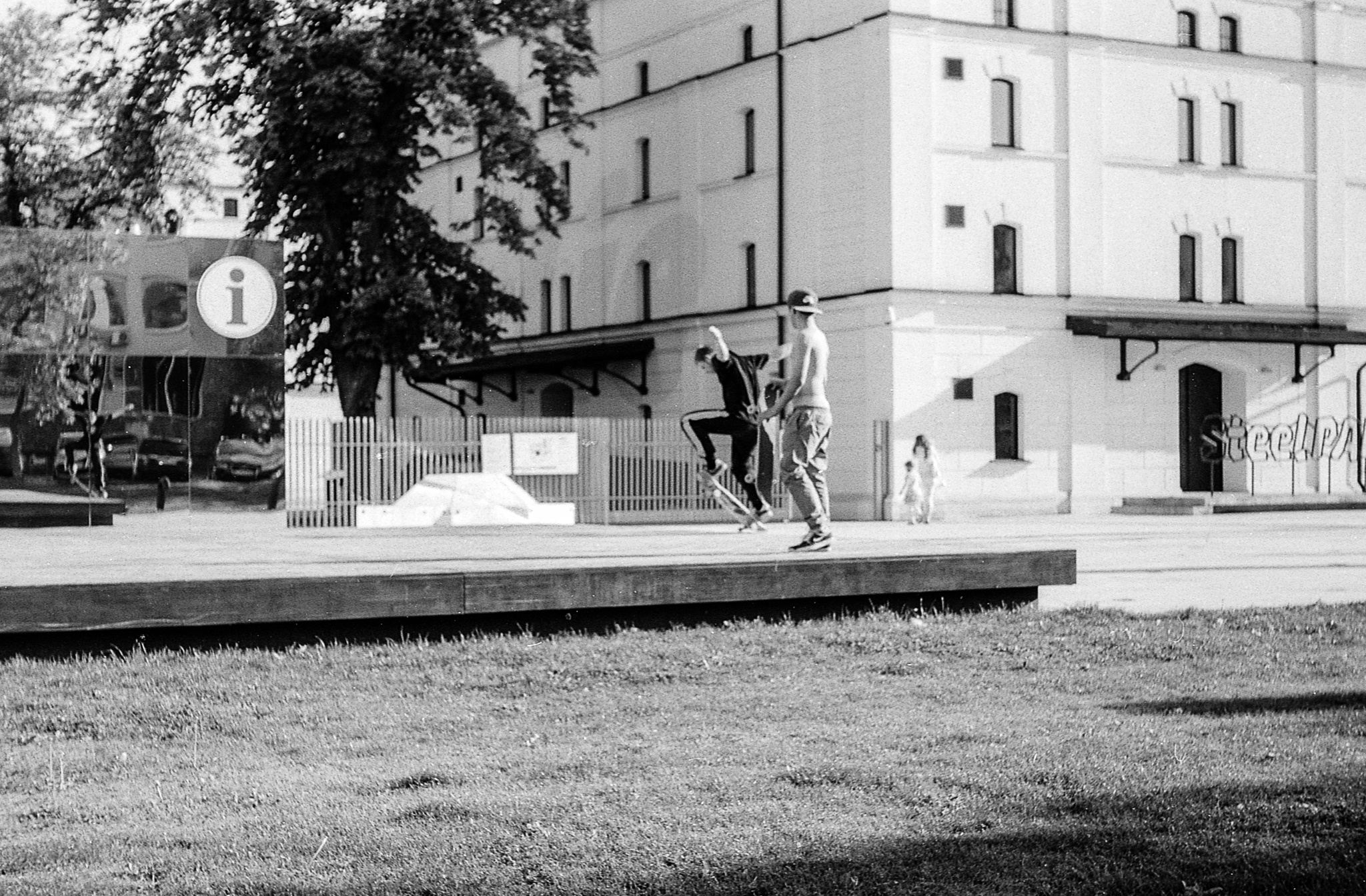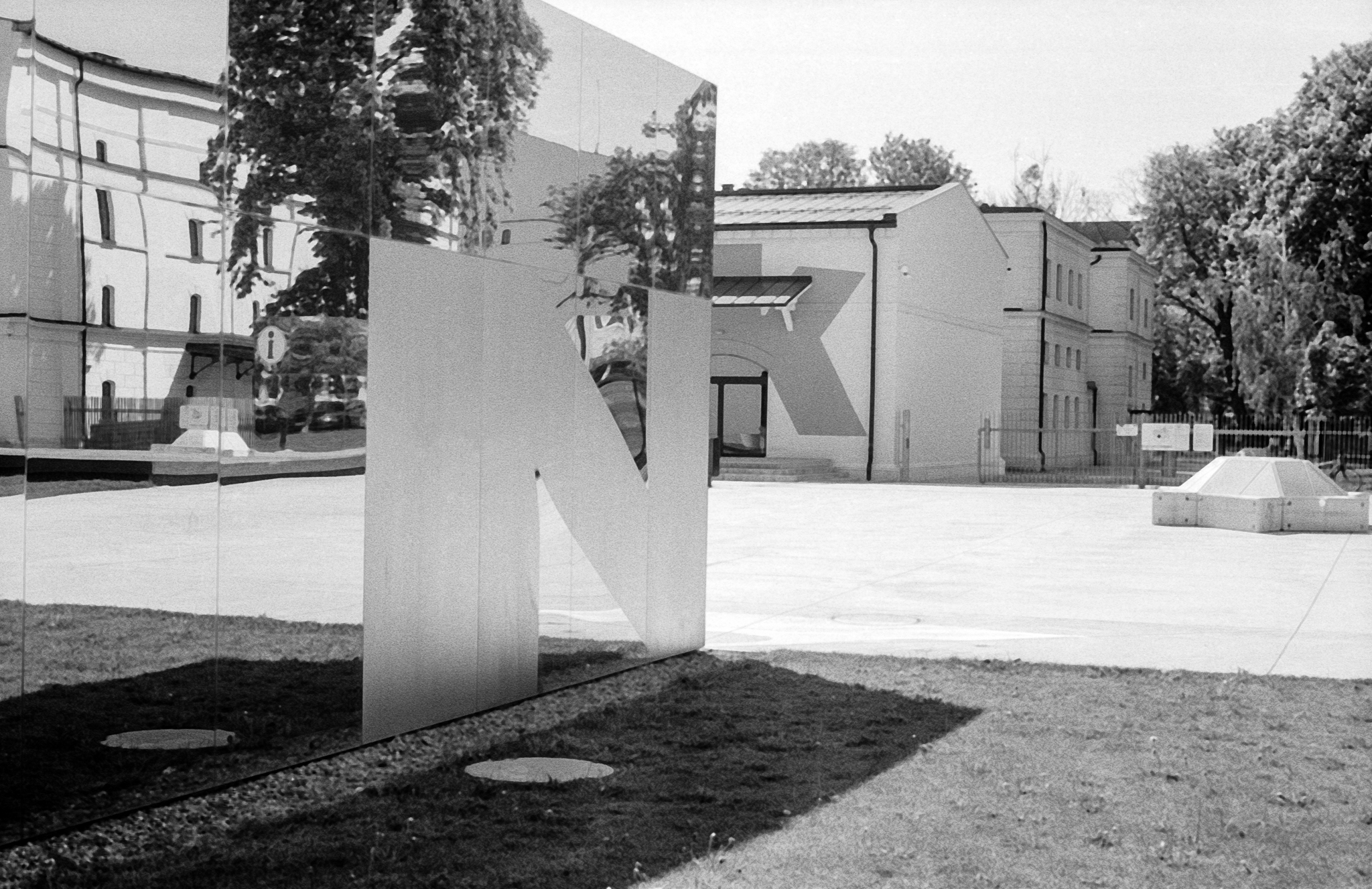
After WWII, the Soviet Union found itself in possession of a lot of Germany’s photo industry. The original Agfa works and venerable manufacturers such as Meyer, Ihagee and Carl Zeiss were all in what was to become the DDR. In the late 1950s a bunch of East German brands were merged into a new company, Pentacon who are best known for their low-cost medium format camera, the Pentacon 6. Along with the P6, they also produced a huge range of Praktica SLRs that saw regular product updates over an approximately 50 year lifespan.
Mine is from the mid-1970s and it’s interesting to compare it to Soviet cameras of the same period. For one thing, it was designed to compete with contemporary Western cameras rather than domestic Soviet production. While it was a budget camera just like the contemporary Zenit E, it needed to be a bit more modern than the rugged Soviet workhorse.
For a start, the shutter mechanism has a full range of slow speeds available. While the fastest is still only 1/500th, the slow end  goes down to a full second. The lens stops down automatically when the shutter is fired and there’s a big DoF preview button on the front of the body. Two sync ports and a battery-powered coupled lightmeter are features that wouldn’t be seen on Soviet cameras until the Kiev SLR range a few years later and the big Carl Zeiss branded lens was designed to look like a seriously professional piece of kit.
goes down to a full second. The lens stops down automatically when the shutter is fired and there’s a big DoF preview button on the front of the body. Two sync ports and a battery-powered coupled lightmeter are features that wouldn’t be seen on Soviet cameras until the Kiev SLR range a few years later and the big Carl Zeiss branded lens was designed to look like a seriously professional piece of kit.
 Unfortunately Pentacon offset the relatively feature-rich design with very cheap build quality. It feels light and flimsy because, well, it is. The body is pressed steel rather than the cast alloy of most other cameras, panel gaps are wider than they should be, controls have a lot of play in them and it feels like a toy camera in the hand. The big and chunky looking CZJ lens is mostly show, the lens barrel is plastic or stamped plate and most of it is empty, the lens elements are relatively small. In fact despite the 49mm filter thread size, the front element is only 18mm across. It’s all talk and no trousers. The Tessar formula used in the lens design is the same as the Industar lenses from the USSR, and I’d bet that this lens is functionally identical to the atrocious Industar-50 that was shipping with some Zenits at the time. The front mounted shutter button is a common Pentacon design tic and it does free up some space on the crowded top plate. The shutter though rattles a lot as it closes and the advance lever feels spongy and imprecise. I own a lot of low-quality camera gear and this doesn’t even feel as well-made Kruschev-era mass market stuff. It’s big too. Compared with most contemporary SLRs, it is wider, longer and has a much taller prism bump.
Unfortunately Pentacon offset the relatively feature-rich design with very cheap build quality. It feels light and flimsy because, well, it is. The body is pressed steel rather than the cast alloy of most other cameras, panel gaps are wider than they should be, controls have a lot of play in them and it feels like a toy camera in the hand. The big and chunky looking CZJ lens is mostly show, the lens barrel is plastic or stamped plate and most of it is empty, the lens elements are relatively small. In fact despite the 49mm filter thread size, the front element is only 18mm across. It’s all talk and no trousers. The Tessar formula used in the lens design is the same as the Industar lenses from the USSR, and I’d bet that this lens is functionally identical to the atrocious Industar-50 that was shipping with some Zenits at the time. The front mounted shutter button is a common Pentacon design tic and it does free up some space on the crowded top plate. The shutter though rattles a lot as it closes and the advance lever feels spongy and imprecise. I own a lot of low-quality camera gear and this doesn’t even feel as well-made Kruschev-era mass market stuff. It’s big too. Compared with most contemporary SLRs, it is wider, longer and has a much taller prism bump.
Shooting it doesn’t dispel the feeling of cheapness. The shutter bounces around as it opens and closes with suspicious amounts of reverb. The five-bladed aperture gives poor-quality bokeh but the lens is too soft at wide apertures to be useful for selective focus effects anyway. Even at f/11 it’s still only sharp in the centre. Overall, it doesn’t have the reassuring weight and solidity of a Zenit nor the easy pocketability of a FED and nowhere near the quality of a Kiev SLR.


